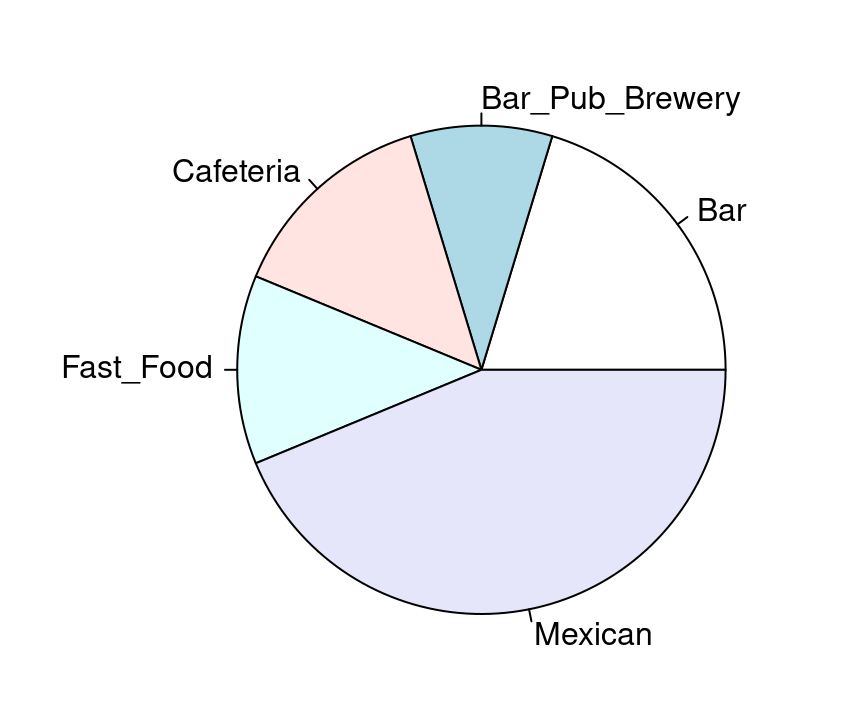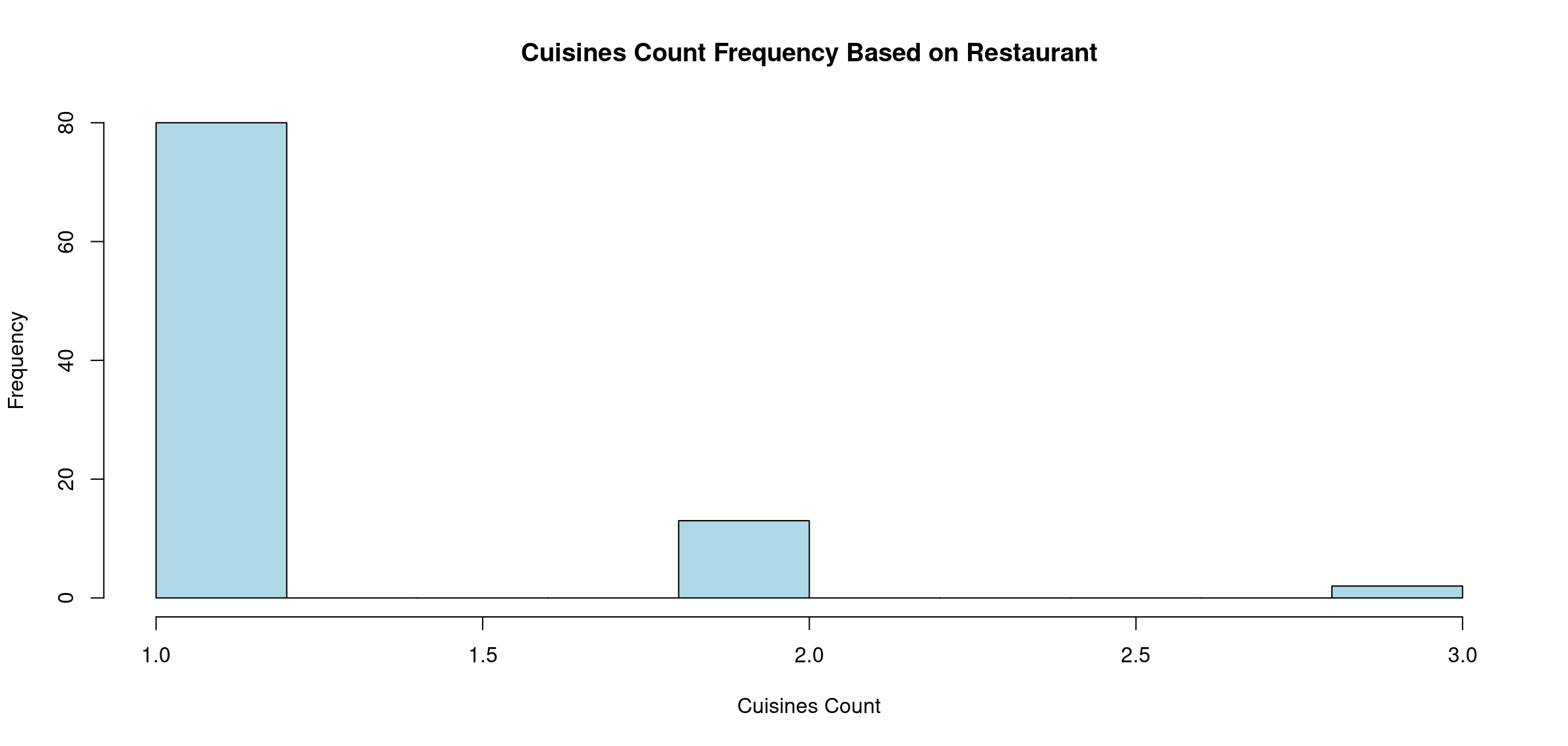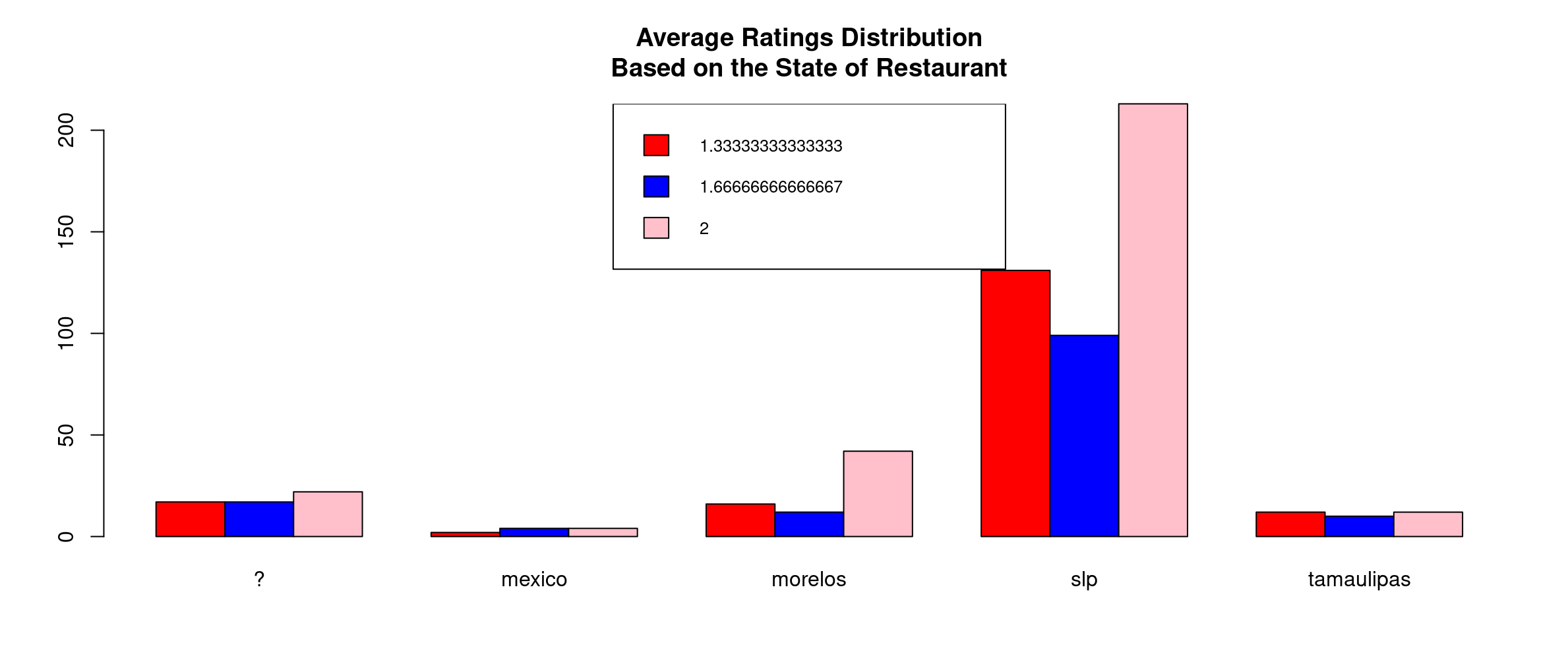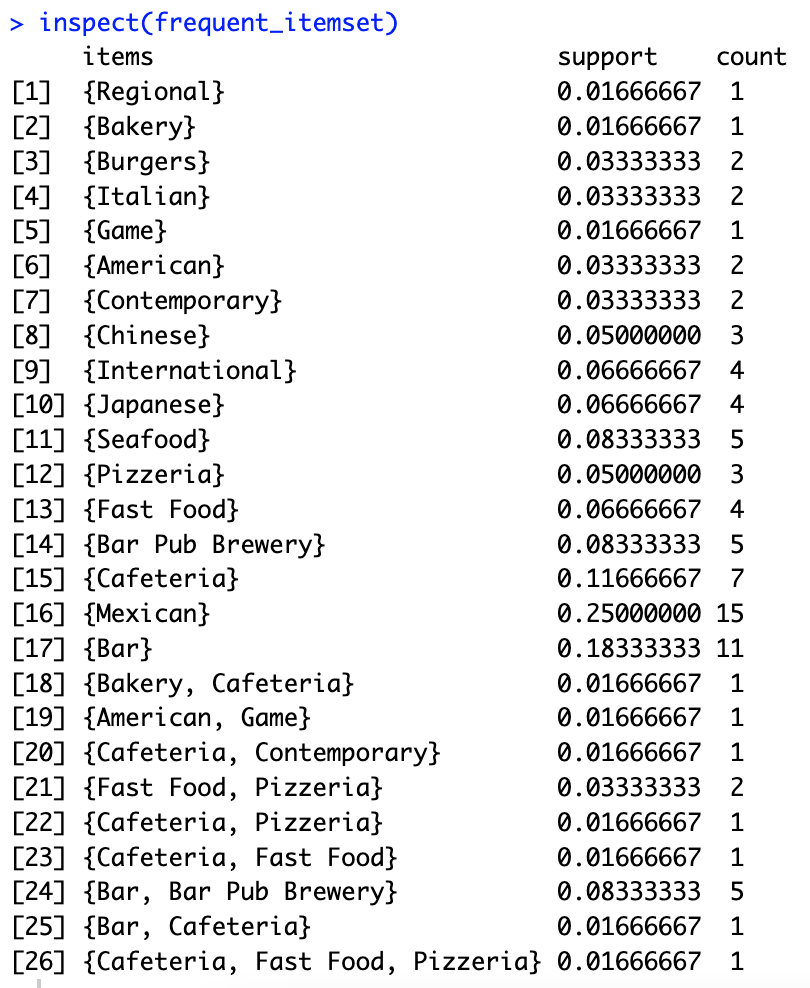Data Visualization
Read CSV and Remove NA
Cuisines Distribution

Cuisines Count Frequency Based on Restaurant

Average Ratings Distribution Based on the State of Restaurant

Frequent Pattern Analysis
Frequent pattern mining in data mining is the process of identifying patterns or associations within a dataset that occur frequently.
This is typically done by analyzing large datasets to find items or sets of items that appear together frequently.
Data Preprocessing
In the phase, there are some data that can’t be used for the further analysis.
We need to remove all restaurants that is a franchise restaurant,
remove all restaurants that provides other services in the restaurant,
remove all restaurants that the country is not defined,
and replace underscore (‘_’) in the cuisine name to space (‘ ’).
Data Transformation
In this phase, we need to change the data, so it is suitable to be used in the apriori analysis.
Prepared the cuisines data in term of the cuisine name.
Data Mining
In this phase, we need to show frequent cuisines using apriori algorithm with minimum support:
0.008 based on the data that have already pre-processed.
Then, we need to show the association rules using minimum confidence:
0.8 based on the frequent cuisines that resulted from step above.
Apriori Algorithm
Apriori algorithm is used for finding frequent itemsets in a dataset for association rule mining.
We apply an iterative approach or level-wise search where k-frequent itemsets are used to find k+1 itemsets.
To improve the efficiency we used apriori property which helps by reducing the search space.

Association Rules
Association Rule is an unsupervised non-linear algorithm to uncover how the items are associated with each other.
In it, frequent Mining shows which items appear together in a transaction or relation.
There are three common ways to measure association: support, confidence, and lift.

References
https://www.geeksforgeeks.org/frequent-pattern-mining-in-data-mining/
https://www.geeksforgeeks.org/apriori-algorithm-in-r-programming/
https://www.geeksforgeeks.org/association-rule-mining-in-r-programming/